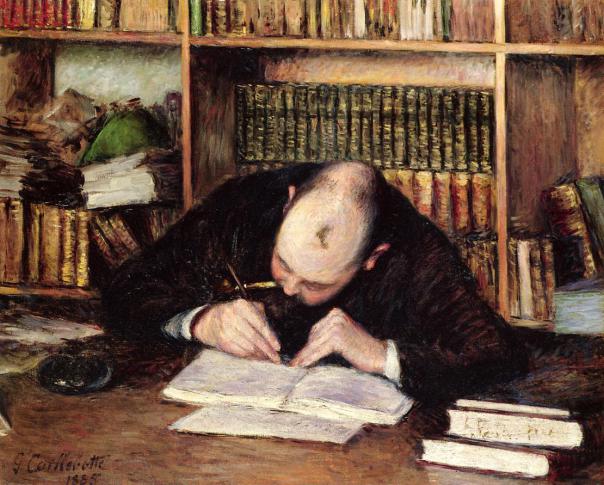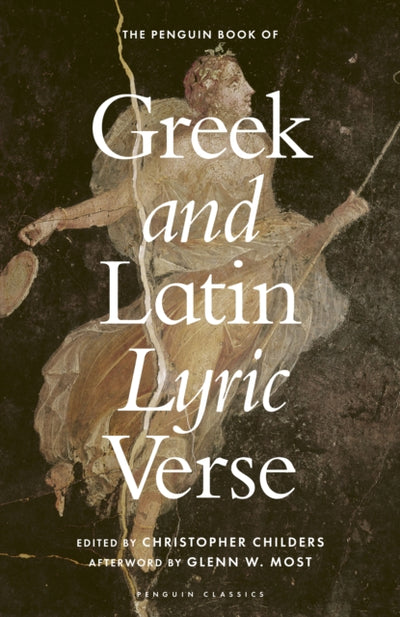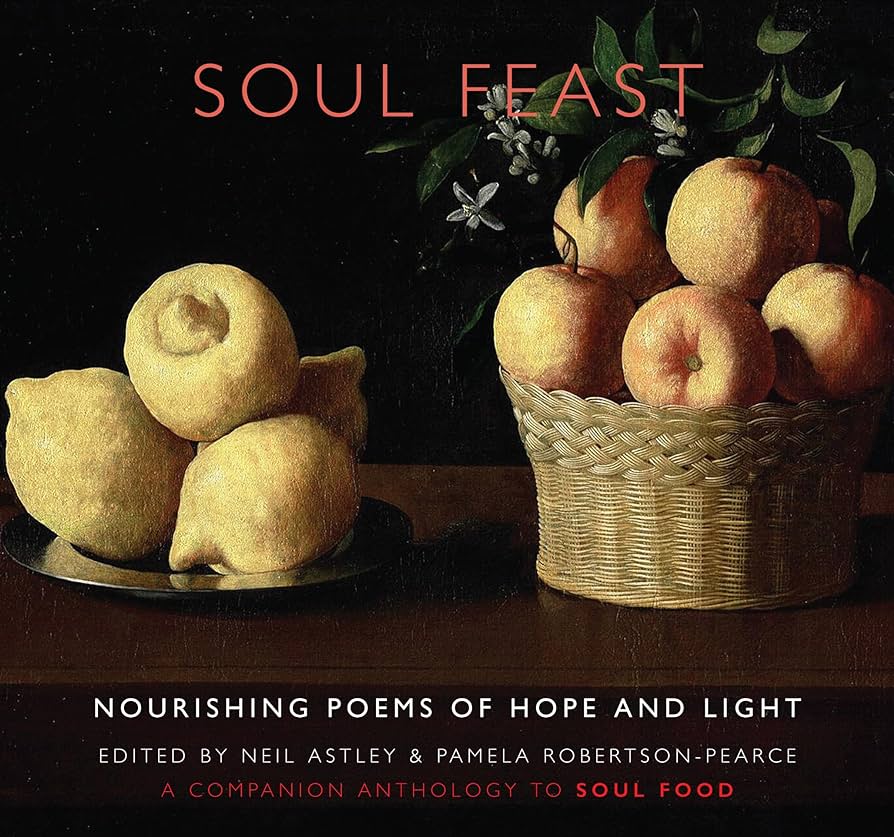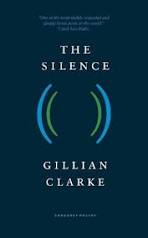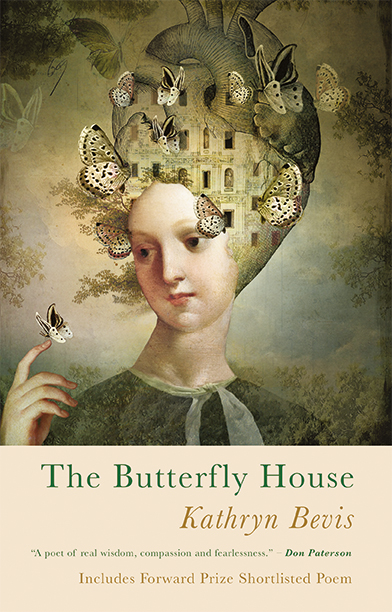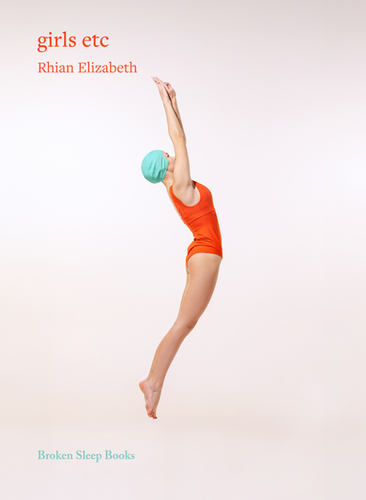*****
The Penguin Book of Greek and Latin Lyric Verse translated and edited by Christopher Childers • Soul Feast: Nourishing Poems of Hope and Light edited by Neil Astley & Pamela Robertson-Pearce • The Silence by Gillian Clarke • The Butterfly House by Kathryn Bevis • girls etc by Rhian Elizabeth
*****
The Penguin Book of Greek and Latin Lyric Verse translated and edited by Christopher Childers. £40.00 hardback. Penguin Classics. ISBN: 9780241567449. Reviewed by Edmund Prestwich
Christopher Childers’ The Penguin Book of Greek and Latin Lyric Verse is a vast undertaking with a great deal to offer those like me who enjoy reading classical literature but can’t read it in its original languages. Epic and drama are excluded, as is the prose literature, but ‘lyric’ is defined very widely indeed, covering both what the ancients would have understood by the term – poems written for performance to the lyre and in a range of metres associated with such performance – and more broadly short or medium length poems speaking in the first person and / or veering towards song, as Childers puts it.
This means, of course, that the book reflects an enormous variety of life experiences and attitudes towards both them and life in general. Readers gain insight into how the world changed for its people as Greek society evolved through the hundreds of years between the time of Archilochus in the seventh century BCE with its tiny city states, and the great Hellenistic kingdoms with their polyglot populations, wide geographical spread and cultural memory, or again as Roman society evolved from republic to empire, and Latin literature from dependence on Greek originals to its own distinctive flowerings. Vivacious introductions to different contexts and historical phases guide the reader through these developments and separate introductions to different writers bring their distinguishing features into focus.
In the Translator’s Preface Childers explains his fundamental decision to represent different Greek and Latin genres and metres by using what seem to him appropriate English metres and rhyme schemes. He hopes this will help him achieve the lapidary quality that he finds in Greek and Latin poetry, whose conventions strongly marked its difference from non-poetic utterance. As different metres were associated with different occasions and genres, poets could invoke these associations across vast spaces of time. This might be to build on them – as the Roman Horace adopted the metre of the Archaic Greek Alcaeus for his carpe diem ode, ‘elevating the Mytilenean’s gruff particularity to universality and transcendence’ as Childers puts it – or it may ironically subvert them, as Ovid does in using the metre of martial elegy in Amores I.9.
Such an argument is strong in principle. Problems can arise from the scale of Childers’ undertaking – a single author translating eighty poets spanning eight centuries, and, as he says, doing so ‘according to consistent principles’. Of course rhyme and conventional metre can lend power to utterance of all kinds, passionately exalted, intimately conversational, persuasive or didactic. However, producing such verse rapidly and in bulk is a challenge to the most skilful rhymer. Childers’ translations of Sappho’s invocation of Aphrodite (Fragment 1) and her expression of envy of a man sitting by a woman that Sappho herself desires (Fragment 31) both have fine phrases in them. However, to my ear, rhyming gives their overall movement a glibness that robs them of feeling and makes them far less effective than several of the other versions I know. The longer fragments that seem to me to work best in Childers’ versions are 44 (the marriage of Hector and Andromache) and 2 (inviting Aphrodite to come from her home in Crete). 44 is indeed strongly marked as poetry by the fact that each of its lines is split into two half lines. However, it barely rhymes, and the midline pauses throw emphasis on individual phrases, so that its distance from ordinary speech enhances its power. And Childers’ Fragment 2 is extremely beautiful. Rhymes again are lightly touched and unobtrusive. The translator’s exquisitely evocative phrasing conveys both the physical beauties of the place Sappho is describing and her own reverent delight in them. Shifting between full and half rhymes, the poem combines the pleasure of fulfilled expectation with the energy of surprise.:
Here, through the apple boughs, the lapse of water
sounds icy-clear, and here, rose-shadow fills
the grass, as through the leaf-light and leaf-flutter
xxxxxxxxa trance distills.
And here are meadows where the buds of spring
exuberantly bloom, where horses graze,
and, honey-sweet, the wind goes whispering … (pg 40)
The success of this longer fragment (I’ve omitted two stanzas) is matched by that of many of the very short ones, also unconstrained by rhyme and – perhaps consequently – as vivid in Childers’ versions as in those of other translators.
In a wider view, I often found the use of rhyme alienating in a way that made it hard to read much of the book at a stretch. I have the same problem with James Michie’s Horace. My objection is not, of course, to rhyme per se, or to its application to Latin and Greek verse. Derek Mahon’s very few, unforgettably brilliant versions of lyrics by Horace and Ovid get much of their wit and driving power from the flair of their rhyming. But Mahon translates very freely. The translator committed to following the precise contours of meaning and implication in the original as closely as possible finds his choice of rhymes inhibited by that very fact. The result can easily be a structure that seems mechanically and externally imposed on the poem, like a skin graft that’s failed to take, rather than something organically involved in its growth. For continuous reading I personally would have preferred it if Childers had allowed himself greater formal freedom.
And yet, and yet, when everything does come together in individual poems Childers’ approach gives great delight. Here’s his version of Horace’s famous Pyrrha Ode (I. 5). In it, exuberantly colloquial language gives an air of immediate, spontaneous utterance to thoughts that the poem’s structural complexity makes linger in our minds in a richly interwoven shimmering of suggestions:
Pyrrha, now who’s the skinnyxxxxxxyoung thing on top of you,
drizzled in perfume, rollingxxxxxxon beds of roses laid
xxxxxxxxxxxxdeep in some grotto’s shade?
xxxxxxxxWho is it for, that blond hair-do
so careful to seem careless?xxxxxxPoor kid! How many tears
he’ll shed at the shifting weather, xxxxxxsurprised by the deities’
xxxxxxxxxxxxmood swings, and the rough seas
xxxxxxxxand black winds, wet behind the ears,
who’s so in love now, thinking xxxxxxyou’re golden through and through,
that you’ll be free forever, xxxxxxyou’ll be forever kind,
xxxxxxxxxxxxand doesn’t know the wind
xxxxxxxxdeceives. Poor bastards, for whom you
glitter before they sail.xxxxxxNot me – a seaside shrine
shows on a votive plaque thatxxxxxxI’ve hung this dedication
xxxxxxxxxxxxto the great Power of Ocean:
xxxxxxxxmy sailor’s clothes, still wet with brine. (pg 465)
Childers’ translation of the ode is amplified by detailed contextual notes. I can’t evaluate these in the way a classical scholar might but as a general reader I found them immensely helpful. They combine close reading of the words themselves – sensitive exploration both of metaphors, going well beyond what I’d noticed for myself on previous readings, and of the implied ambivalence of the speaker’s feelings – with background information only a scholar could give. This involves the poem’s generic contexts and metrical allusiveness. For the enthusiast prepared to follow up references to relevant poems included in the volume, such information offers starting points for developing a sense of classical literature as a living, evolving whole. In relation to this specific poem, it prompts a deeper appreciation of Horace’s dazzling artistic synthesis of earlier subgenres and motifs.
Poem after poem gets similar treatment, exploring it both in itself and in relation to other poems. This brings us back to the sheer scale of what Childers has done in this volume – some 550 pages of poems (including the broad introductions to periods and writers) and another 320 pages of notes to individual texts. These look forward as well as back – to modern and Early Modern authors influenced by the ancients as well as to the predecessors the ancients themselves drew on or deliberately alluded to. At the highest points we have outstanding single poems where the brilliance of a great original is matched by the brilliance of the translation. However, the special achievement of the volume is in the sheer amount of translated poetry, background information and synthesising comment it offers the reader, in the process both illuminating these outstanding single works and opening wide fields of reading pleasure.
Edmund Prestwich grew up in South Africa but has spent his adult life in England where he taught English at the Manchester Grammar School till his retirement. He has published two collections: Through the Window with Rockingham Press and Their Mountain Mother with Hearing Eye. He has no claims to Dante scholarship but has been a long-term amateur reader of Dante in Italian and in different translations.
******
Soul Feast: Nourishing Poems of Hope and Light ed. Neil Astley & Pamela Robertson-Pearce. £12. Bloodaxe Books. ISBN: 978-1780377063. Reviewed by Rosie Jackson
A new anthology from Bloodaxe is always a welcome addition to the poetry shelves. Soul Food (2007) has been one of my go-to collections for many years, with its reliable spiritual insights, explorations and epiphanies as well as emotional support, all quite at odds with the changing intellectual and political fashions in mainstream poetry. The new companion anthology Soul Feast has some similar excitements.
I’d buy the volume for the discovery alone of New York poet Maya C. Popa’s ‘Dear Life’ – a poem I didn’t know, which jumped out at me straight away and with which I identified completely.
I can’t undo all I have done to myself,
what I have let an appetite for love do to me.
I have wanted all the world, its beauties
and its injuries; some days,
I think that is punishment enough…
Or for the two brilliant poems by Ellen Bass ‘The Thing Is’ and ‘Any Common Desolation.’
The Thing Is
to love life, to love it even
when you have no stomach for it
and everything you’ve held dear
crumbles like burnt paper in your hands,
your throat filled with the silt it.
When grief sits with you, its tropical heat
thickening the air…
Then you hold life like a face
between your palms, a plain face,
no charming smile, no violet eyes,
and you say, yes, I will take you
I will love you again.
It’s this kind of poem – there for you when the chips are down – that makes you turn to a volume like Soul Feast, and you can’t have enough. Contemporary stalwarts like Jane Hirshfield, Jo Harjo, Roger Robinson, Naomi Shihab Nye, offer truths and visions that are all the more necessary and sustaining given the dire state of the world right now. It would be too easy to voice glib reassurances, and the bunch of poems conspicuously placed together under the parasol of ‘hope’ did not always convince, but there are enough far-reaching poems to counter them.
I did find myself a little confused, though, by the overall editorial policy. When I first went through looking for the usual spiritual giants, I was rather taken aback to find that this volume, unlike its predecessor, had no Rumi, no Kabir, no Rilke, no St John of the Cross, George Herbert, Emily Dickinson, G M Hopkins, Mary Oliver, Thomas Merton, Wendell Berry, Robert Bly, Jane Kenyon or R S Thomas. Nor is there any Hafiz in either volume, despite his immense popularity in various translations and renditions in recent years. All very well, you might say, ring the changes: it must be that the new plan was to have completely different names in each one. Yet as I examined further the index of writers in both volumes, I noticed a handful of overlaps of names featuring in both: Marie Howe, Imtiaz Dharker, Brendan Kennelly, Denise Levertov, Naomi Shihab Nye, Dennis O’Driscoll, Richard Zenith. At which point the overall new choices made less sense to me. There are many powerful names (some well-known, others less so) excluded here, and while I’m thrilled to see some exciting contemporary names being introduced – such as the the less reverent John McCulloch (though I would have liked to have seen included his phenomenal poem ‘Soulcraft’ from Reckless Paper Birds), I couldn’t help feeling slightly disappointed by the overall focus. (The cover, another beauty, is interestingly from the same painting as Soul Food – a 17th c still life by Francisco de Zurburan).
Having said that, maybe my slight disappointment is due to the fact that I am more familiar now with this range of poetry than I was a decade ago, and you could say some of this is due precisely to the impact of the four brilliant Staying Alive anthologies from Bloodaxe, all of which are indispensable anthologies for the very best of contemporary poetry. But as quite a few of the poems in Soul Feast also feature in these anthologies (e.g. Langston Hughes, Imtiaz Dharker, Linda Pastan, etc), I found myself turning many pages too quickly as I encountered yet more old faithfuls – the likes of E.E. Cummings ‘I thank You God for most this amazing day’; Edip Cansever’s ‘Table’ (which I must have used as a template in dozens of workshops!); Naomi Shihab Nye’s ‘Gate A-4’; Derek Mahon’s ‘Everything Is Going To Be Alright; Denise Levertov’s ‘O Taste and See’, and so on.
Still, I suppose all anthologies will please some more than others, and there are a few gems here that are not only unpredictable, but that have all the passion, luminosity and heartfelt humanity that I loved so much in Soul Food. I’d pick out May Swenson’s brilliant ‘Question’, Thomas Transomer, or the wonderful 2 pages devoted to Borges: first his ‘Poem Written in a Copy of Beowulf’ followed by a poem it inspired, Peter Sirr’s ‘A Saxon Primer’, which talks about Borges going blind, then beautifully extends Borges’ ideas about the soul and writing.
It’s that the soul must know it’s immortal,
he said, and its hungry turning circle
takes everything in, achieves all that’s possible.
There’s a kind of secret knowledge
enfolds us, reaches everything we do
or else we all we do is the knowledge and the soul.
Beyond all this, the sweated grammar,
the effort to know one thing after another,
on the other side of the poem the universe is waiting,
patient and inexhaustible. Time and again
the light keeps fading from what we love
though we turn and turn to it, singing
to blunt the darkness, to fold the light back in.
For me this ‘blunting the darkness’ is the essence of poetry about the soul and this is what I seek when I open an anthology like this. Thank you Bloodaxe for continuing to countering the dominant poetic voice with words that nurture heart and spirit.
Rosie Jackson lives in Teignmouth, Devon. Widely published, she has won many awards, including Commended National Poetry Competition 2022, 1st prize Teignmouth 2021, 1st prize Stanley Spencer Competition 2017. A Hawthornden fellow in 2017 and nominated for the Pushcart prize 2021, her latest collection is Love Leans over the Table (Two Rivers Press, 2023). Moniza Alvi: ‘rare, nourishing poems, open and vulnerable, spiritually aware and with an acute sense of beauty and struggle.’
******
The Silence by Gillian Clarke. £12.99. Carcanet. ISBN: 978 1 80017 392 7. Reviewed by Kathleen McPhilemy
When I read the first poem, ‘Blood Moon’, in Gillian Clarke’s wonderful new collection, The Silence, I felt a niggle of doubt as I read the last lines, which compare the moon’s colour to ‘the apple picked in Eden / bleeding from the bite of our first sin.’ Of course it is a wonderful image, recapitulating the eclipse of the moon and bringing to mind the way certain rosy apples will show pink when bitten into. Of course it is a powerful close to the poem’s argument, moving from an apparently innocent observation of a natural phenomenon to a recognition of the damage that humanity has done to the planet. Nevertheless, I felt uneasy at the reference to the concept of Original Sin and the burden of theology and religious guilt it carries with it.
However, in the poems that followed, I came to recognise that Clarke is using the structures and imagery of Christianity as an artist might use a paintbox. This is particularly evident in the sequence, ‘The Hours’ previously published separately as a pamphlet, where the poet uses the different monastic times of prayer as a framework. The suggestion of painterliness is appropriate, for many of the colours in these poems and in the rest of the book have the brightness and intensity of a medieval book of hours or medieval or renaissance painting. Blue is ‘cerulean’, fire is ‘rose-gold’, leaves, sunsets, laburnum and witch hazel are also gold.
As well as this powerful imagery, Clarke also makes use of the Christian calendar and ritual as waymarks in her collection. The first part of the book, more than half, follows the seasons through Covid and lockdown as experienced by the poet and her partner on their smallholding in Ceredigion. The poems are full of natural detail, closely observed, as animals and plants moved into the foreground and ‘birdsong became the sound of day’. Clarke is never complacent about the effects of the ‘pestilence’ – another biblical reference. The idea of the ‘first sin’ reappears in ‘Song’:
The lanes are empty, sky unmarked,
fields quiet as the world’s first day,
and we are alone
before the first sin,
before the machine,
when nothing had happened.
Here, the Fall seems to have been brought forward perhaps to the invention of the steam engine, and the prelapsarian state envisioned has water singing in Welsh: ‘Listen! Water tells its rosary. / Welsh sings in a running tap’ -again, an image of Christian ritual.
Clarke never forgets the horror of Covid; indeed, in some ways this part of the book could be regarded as an elegy or even a litany for the dead. References to the dead and the counting of the dead are a refrain tolling through the poems. Recurrence and repetition are not restricted to death. Certain natural images are threaded through the poems so that they become strangely emblematic: the blackbird’s first appearance in the ‘The Hours’ seems ambivalent:
and the blackbird’s Latin all day long,
dawn till nightfall, over and over,
his song on the spire of the beech:
veni vidi vici, veni vidi vici,
this is mine, mine, mine.
This anthropomorphic territorialism contrasts with the presentation of its mate, ‘she in the silence of the secret nest.’ In the title poem, ‘The Silence’ the singing male bird and his silent mate reappear. The secrecy and the silence of the female bird seem key, although it is not exactly clear why. The pilot making sky trails far above is also secret and silent, the tractor driver in the fields is a ‘shadow man’. Life goes on, but it seems the ‘crown’ (pun on corona) has passed to the virus, ‘hatched in the gut of a bat, / borne in the blood of a pangolin’. This poem seems to offer us a Nature continuing without humans: ‘ a million leaves breathe, / a whispering sound / as beech boughs lift and fall.’ The young fox who appears in several poems eventually accepts the poet’s offer of water in a bowl, possibly signifying a reconciliation between human and nature. Other poems are less optimistic. ‘Winter Sunset’ is a Christmas poem which ends with ‘plane-trails burning. // We have lit the fuse. / Earth holds its breath.’ “Afterwards’ is a bleak catalogue of climate change, ‘the balance of things undone by money’.
Ideas, images, phrases, words return throughout the collection; lesser poets might hesitate to repeat themselves, but Clarke uses these recurring patterns to create a coherent fabric where sounds and images are different threads weaving through the work. This poet is rightly renowned for her musicality; her line endings are faultless and every word owns its place. Bolstered by the single setting and the passing seasons of the Covid poems, she is able to explore discomfort. Several times we are presented with the image of an ideal couple, the architect and the poet working in harmony together:
All morning, two at the table,
tapping, tapping two worlds.
My words. My lines.
Your lines, your spacial harmonies.
You build a house on screen.
I roam the page for song.
‘Terce’
This seems to be a picture of marital harmony, though the repetition of ‘two’ and the neat division of the stanza into phrase and line pairs might give us pause. In ‘A Spring Morning’ the emphasis changes; the architect-partner is back on his step-ladder, ‘gold steps to the sky’, but the last line signals essential loneliness even in the shared rush of energy which is spring, ‘The whole world together. Each one of us alone.’
I enjoyed the first part of the book more, although I could, more or less, follow how the poems in the second part opened out. This worked particularly well with the poems about the last princess of Wales, whose story is prefigured in the references to Welsh as the sound of water, developed more fully in “Water Talk’: ‘Phrases in a running tap / in a language I once knew / but now forget.’ We know that Gillian Clarke’s family were Welsh speaking but she was brought up to speak English, probably for reasons of class, and that this is a loss she feels deeply. The story of Gwenllian, daughter of the last Welsh prince of Wales, Llywelyn, who was taken out of Wales as a baby and imprisoned in an English castle, ‘walled from the world in the care of nuns’ is particularly poignant. Clarke explores the Welsh of the name to discover the extent of her loss:
They stole who she was, Gwenllian,
With its ‘gw’ of gwynt, ‘ll’ of llian,
llanw, song of the tides that broke
on the shores where she was born.
There are some fine poems about family, some angry political pieces about war and Brexit, but for me the last part of the book is more fragmented and indeed the poems which take us back into childhood and the poet’s relationship with her grandmother might well be part of a different book. Nevertheless, I feel privileged to have this one on my bookshelves.
Kathleen McPhilemy grew up in Belfast but now lives in Oxford. She has published four collections of poetry, the most recent being Back Country, Littoral Press, 2022. She also hosts a poetry podcast magazine, Poetry Worth Hearing.
*****
The Butterfly House by Kathryn Bevis, £10.99. Seren. 70pp. 978 1781 727553. Reviewed by Tessa Strickland
In the closing note of her first and in all likelihood final collection, Kathryn Bevis advises that each of her poems is in conversation with others. The opening piece, ‘My body tells me that she’s filing for divorce’, (shortlisted in the 2023 Forward Prize for the Best Single Poem – Written) stands alone, rather like a foreword. Two sections follow; After, made up of sixteen poems, then Before – twenty-five poems that take us back to the poet’s earlier life. Along the way, there are encounters with a ring-tailed lemur, with butterflies, barn owls, best friends, bullies, starlings, flamingos. Throughout, Kathryn Bevis blazes with a defiant, irrepressible zest for life, a hunger for learning and a commitment to writing on her terms, in her way, in a voice that is utterly contemporary.
There is a voluptuous quality in some of these poems. ‘Love’, a response to Dorianne Laux’s poem ‘Time’, is a succession of ten barely containable tercets. Here is her opening:
LOVE
will not sit still, be good, make no noise.
She shapeshifts from a bare tree to a wolf moon
to a mansion. In her courtyard we rest, eat oranges
and persimmons from one another’s bowls,
breathe honeysuckle’s sweetness as it rises,
ripens, circles the iron pergola…
Out tumble the images, some of them startling – ‘she is a stingray stealing the show with her high voltage’ – and each of them presented with almost deceptive self-assurance. This is love that is fierce, feminine, beyond categorisation:
…she will not allow herself to be arranged,
alphabetised. She will not be tidied into the drawers
under the bed. Love revels in her own exquisite
ordinariness. This soup pot. This loaf of bread.
Sources of inspiration range from the Old Testament to Goethe to contemporary writers. Among these are Marie Howe, whose ‘What the Living Do’ informs ‘What the Dead Do’, Sharon Olds (‘My Grandparents Pose on the Steps of St Matthew’s Church Sheffield, Boxing Day 1942’), Fiona Benson, Andrew Waterhouse. I wish I had been able to identify everyone. Love of the natural world and its creatures surfaces and resurfaces. There are watery echoes of Alice Oswald in ‘Song o’ the River Itchen’, a poem that cries out to be read aloud, its Hampshire dialect richly onomatopoeic with words like clockun, gloxun, glimmerun.
‘Starlings’ is a revision of the Genesis creation myth, exquisitely presented as a murmuration on the page and boldly inventive:
then we say let the SPIRIT be divided into the skybright
xxxwe will call LIGHT and the outsnuff we will call DARKNESS
xxxxxand let DARKNESS bring about a great shitting upon the earth
and we say let DARKNESS herald
xxxthe downpull and the stenchsweet,
the dirtroost and the clutchheart
Taken as a whole, ‘The Butterfly House’ is a collection that’s as wide-ranging in its forms as in its sources. The title poem is shaped as two neatly balanced wings, the first set in the past, the second in the present. First comes the memory of sitting one winter with a dying friend, ‘And though it was January – the pond / a frozen oval – though each blade of grass / had etched itself against the ground and each / frail thing had hidden from the stalking frost,/ a butterfly flew to your window, sudden/and strange, with wings that throbbed like a heart.’ In the second stanza, we’re on a pilgrimage with the author in the mist and heat of the tropics, the air alive with red lacewings, swallowtails, morphos. ‘Clear as leaded panes, / glasswings feast on nectar. They close themselves like hands that meet in prayer, then open up / to cup the tropic air’. In ‘Honeymooner’s Ghazal’, Kathryn’s new husband teaches her the names of sea birds, ‘my love’ as the repeating disyllabic line ending to each couplet. Here, we’re among redshanks, cormorants, gannets, crows, unpredictable weather, in the liminal territory of a shoreline. In the closing couplet, ‘These kittiwakes glide – they trace rings with their wings / and your voice is the air that they’ve stirred, my love’.
Some poems stand out for their tremendous narrative drive. ‘Everyone will be there’ imagines its writer’s funeral party in language that is lavish with longing:
… They’ll arrive in their dozens by wagon,
on horseback, in cars and on unicycles, shod
in their heels and brogues…
And later:
I’ll be there, wearing a wicker dress.
Friends and relatives will braid in my bodice
a meadow, bright-tipped with the names
of their love: angelica, bluebell, cotton grass,
dog rose, eyebright, forget-me-nots
‘The Wheel’ uses the quarter- and cross-quarter festivals that frame the Celtic wheel of the year to track the acceleration of disease: ‘…By Lammastide your whole life’s / harvest starts to slide’… ‘by Yule your body will up-anchor / your breasts untether, right then left. / They say your spine will wander, your brain uproots at last.’
It can be hard not to flinch at the honesty, precision and imaginative power of these poems. When ‘The Witch in a Bottle at the Pitt Rivers Museum Finally Escapes’, she takes the author on a wild ride through the museum and beyond. ‘She wants. She / has appetites. She must see and smell and touch / it all. Taking me by the hand, she gifts me a bead / with a face, crowns me with a gold torc… But she wants more, much more, / pulls on my sleeve to gaa oot…’
Kathryn Bevis has built a butterfly house whose beauty is beyond price.
Tessa Strickland was born and brought up in rural Yorkshire. After a career in publishing, most notably as originator/editor-in-chief of Barefoot Books, she started to write poems. Her writing has been widely published and she is now working on a collection. She was awarded third prize and highly commended in the Crysse Morrison Poetry Competition 2023. Kathryn won the first prize.
*****
girls etc by Rhian Elizabeth, £8.99. Broken Sleep Books. ISBN: 978 1 915760 62 3.
Reviewed by Lucy Heuschen
In her new collection from Broken Sleep, girls etc, Welsh poet Rhian Elizabeth writes in frank, unflinching, yet often lyrical language. These are fierce poems, delving deep into female experience and relationships, whether maternal, daughterly, romantic, abusive, tragic. The poet rarely falls back on clichés of female solidarity, however, and the women in these pages often hurt more than they help. (Note: The titles and poems in this book do not use capital letters. This has been reproduced in this review).
In these poems, love is a constantly shifting battlefield, even when it is hidden behind a veneer of domesticity. Much as the poet would like to “just watch / the rising of thousands / of yellow miracles out / from the darkness below” (from the poem ‘death of a sunflower’), this is a rare luxury. In the opening poem, ‘September 30th, 2005’, the reader is right there in the birthing room as an out-of-place, transgressive observer. Coming right at the start of the book, this lets us know to expect not a cosy armchair, but a rollercoaster. The challenges of articulating love begin at birth and never let up: ‘your little lungs giving out their very first roar / and me, on the other end of the cord’.
The poems dealing with mother-daughter relationships are among the best in the collection, with everyday language that feels true, but never trite. Choice of form helps with this endeavour. In ‘my daughter eats a roast dinner on skype’ the stanzas float like particles across the page, or bytes of data across an internet connection. The opening assertion ‘she is an artist’ contrasts almost comically with the reluctance of an absent daughter to eat her vegetables. Here is the familiar dynamic of the dinner table, rendered strange by technology but also, it is implied, by emotional distance. The parent tries to draw out the connection as long as possible, the words strung out across multiple lines:
we never want
the things
we love
the most
to end.
In ‘taylor. fucking. swift’, the mother remembers asking her daughter who she would save from drowning: her or Taylor Swift. This everyday conversation makes use of pop culture to convey the mother’s feelings about her daughter as she grows up and explores her identity and allegiances.
Many poems involve an act of love, passion, or devotion; a desperation to communicate love and receive love in return, even at risk of a broken heart. In ‘it starts like this’ the poet writes: ‘how fucking tragic to put yourself / on display like that’. This is an eternal and yet entirely modern message, as the same poem later spells out: ‘oh love me, PLEASE!’ accompanied by a swipe (of a smartphone screen to the left or right within a dating app). Is this love, physical attraction, or something deeper, to do with self-image perhaps? The use of second person here is effective in conveying this confusion; how easily one’s self-worth can be lost or eroded online.
There is an underlying unease, a seediness even, in poems such as ‘Patchouli’, where the speaker is meeting for an explicit encounter, where the stink of cat’s faeces and by extension, the occupation of the lover, are covered ineffectually by the smell of incense. The speaker claims not to judge but knows enough to break things off: ‘as an only child, you are not cut out for sharing your things’.
An interesting element to note is the sequence of Swedish poems that weave through the book: the preparation of a Midsummer feast (although could a pop cultural reference be spotted here, this time to the horror movie of that name?); the history of a standing stone; the ABBA singer Agnetha Fälltskog – who leaves every letter from her stalker unanswered. While we never quite lose our sense of unease, these beautifully crafted poems serve as moments of reflection, slowing the tempo with Scandinavian detailing. They are finely judged poems both in content and placement within the book.
Rhian Elizabeth has a neat way of rounding off a poem with a smart observation, though sometimes this approach risks restating what we have already gleaned. In ‘fixing’, perhaps a few of the more explanatory lines could be dropped without damaging the poem’s integrity. A little more could be left to the reader’s understanding. For example, in ‘if we could just go back i’d push you higher’, the poet provides a set of striking images that build into an extended playground metaphor. She concludes:
guiltxxxxxxxxis a roundabout
xxxxxxxxxxxxthat won’t ever let you get off.
This trait gives the impression of a poet seeking to impose order and clarity on conflicting stories and emotions. Or perhaps, in a collection where faith in relationships is often attempted but rarely reciprocated, the reader is just another person not to be trusted. Nevertheless, with the lovely final couplet of the final poem ‘outer space, out of time’, we are invited to leave the rollercoaster behind and find a little closure.
Lucy Heuschen is a British poet living in the Rheinland. Her poems appear in magazines and anthologies including The High Window, Ink Sweat & Tears, Obsessed By Pipework and Lighthouse and New Contexts. Her debut pamphlet was We Wear The Crown (Hedgehog Press, 2022) and her latest is Loggerheads (The Broken Spine, 2024). Her first full collection, bringing together her love of history, storytelling, family and feminism, will be published by Yaffle Press. You can find Lucy at www.lucyheuschen.co.uk.
